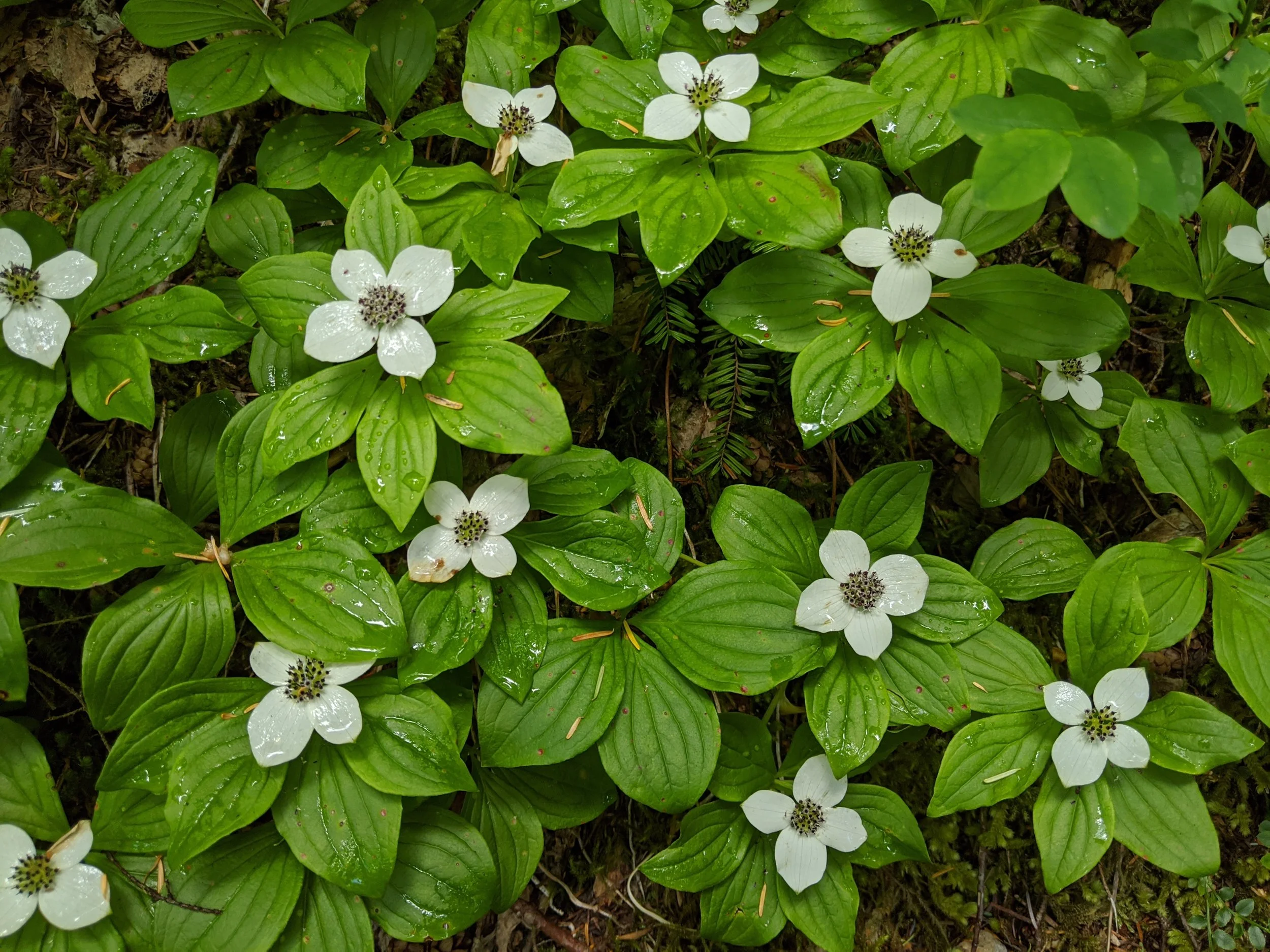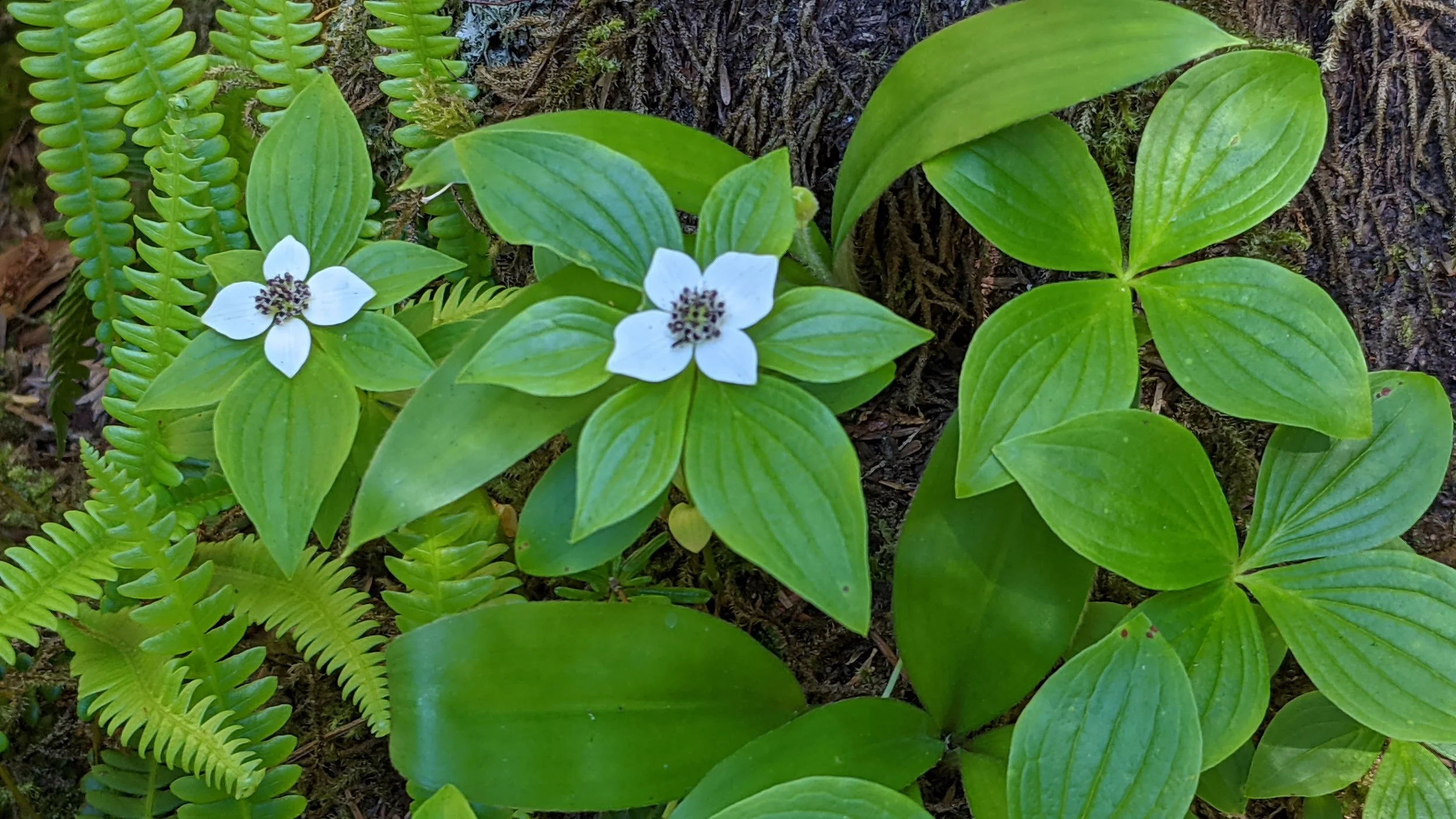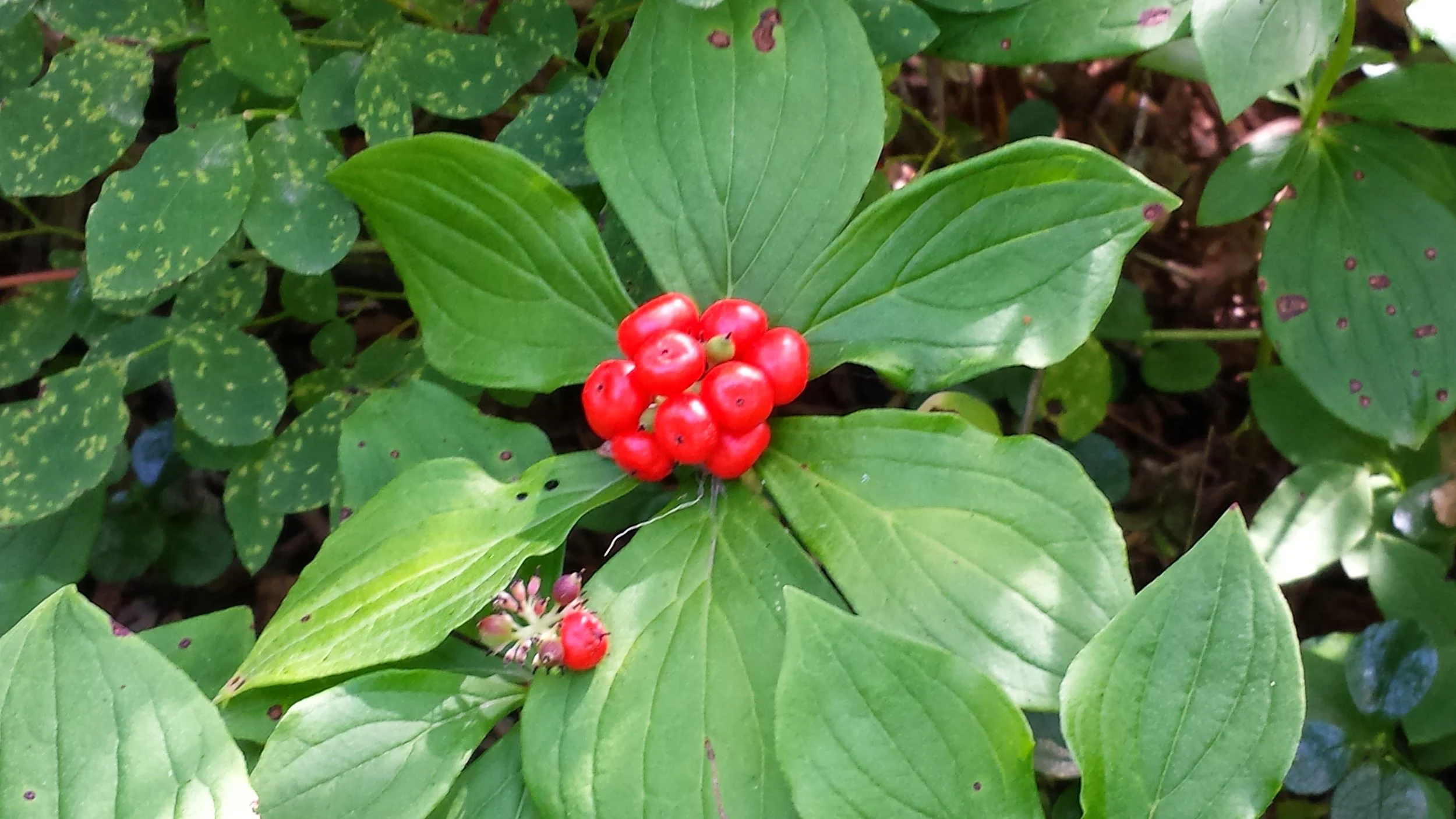Cornus unalaschkensis (Western Bunchberry Dogwood) 4 in.
Bunchberry is a hard-to-find and beloved native perennial that forms a low semi-evergreen groundcover as it slowly spreads over time. The showy blooms begin in June and persist through August, becoming clusters of bright-red berries that attract songbirds. The glossy leaves turn reddish with fall color, and typically persist over winter before being replaced by the fresh flush of new growth in March and April, and serving as an important larval host to native butterflies.
This woodland beauty grows best when placed to mimic its native habitat: in partial to deep shade, tucked beneath shrubs and trees in the nutrient-rich, deep humus-y soils of our native forests. For success in poor soils, try integrating rotting logs,aged bark, and compost into the soils to create the ideal conditions.
Plant Bunchberry with other shade-loving native perennials, such as Dicentra, Vancouveria, Maianthemum, Trillium, and Prosartes; waterwise Epimedium is also an excellent planting partner for enchanting vignettes in your shade garden!
Bunchberry is a hard-to-find and beloved native perennial that forms a low semi-evergreen groundcover as it slowly spreads over time. The showy blooms begin in June and persist through August, becoming clusters of bright-red berries that attract songbirds. The glossy leaves turn reddish with fall color, and typically persist over winter before being replaced by the fresh flush of new growth in March and April, and serving as an important larval host to native butterflies.
This woodland beauty grows best when placed to mimic its native habitat: in partial to deep shade, tucked beneath shrubs and trees in the nutrient-rich, deep humus-y soils of our native forests. For success in poor soils, try integrating rotting logs,aged bark, and compost into the soils to create the ideal conditions.
Plant Bunchberry with other shade-loving native perennials, such as Dicentra, Vancouveria, Maianthemum, Trillium, and Prosartes; waterwise Epimedium is also an excellent planting partner for enchanting vignettes in your shade garden!
Bunchberry is a hard-to-find and beloved native perennial that forms a low semi-evergreen groundcover as it slowly spreads over time. The showy blooms begin in June and persist through August, becoming clusters of bright-red berries that attract songbirds. The glossy leaves turn reddish with fall color, and typically persist over winter before being replaced by the fresh flush of new growth in March and April, and serving as an important larval host to native butterflies.
This woodland beauty grows best when placed to mimic its native habitat: in partial to deep shade, tucked beneath shrubs and trees in the nutrient-rich, deep humus-y soils of our native forests. For success in poor soils, try integrating rotting logs,aged bark, and compost into the soils to create the ideal conditions.
Plant Bunchberry with other shade-loving native perennials, such as Dicentra, Vancouveria, Maianthemum, Trillium, and Prosartes; waterwise Epimedium is also an excellent planting partner for enchanting vignettes in your shade garden!



